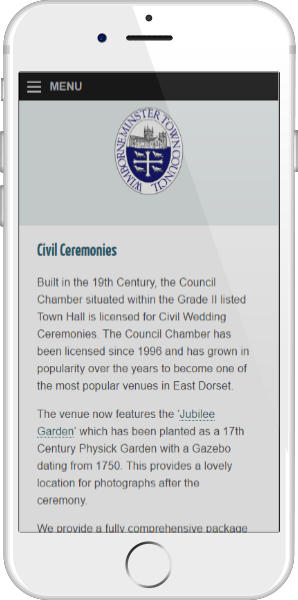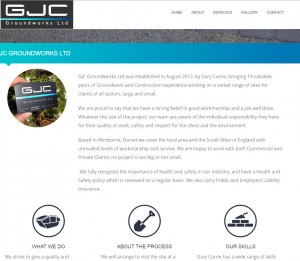News/Blog
What is SSL, does your website need it and how much does it cost?
Jan 2018
There has been a lot of news in the press about website security and specifically SSL encryption, so what is SSL, does your website need it and how much does it cost?
Websites protected with an SSL certificate encrypt the communication between the website itself and the website visitor. Where you have sensitive communication (e.g. you’re handing over your credit card or putting in a password) that’s essential. Sites like PayPal, Facebook and your bank switched to SSL a long time ago. You can tell whether a site is using SSL because the site address starts https:// instead of the traditional http://. Also, most browsers mark such sites with a padlock, or green shading, or the words “Secure” or similar.
E.g.
Facebook in Chrome

HSBC in Internet Explore
![]()
But remember, if your site doesn’t contain anything more sensitive than your publicly available contact details and no confidential communication takes place with your clients via your website you don’t really need SSL.
Nevertheless, over the last 12 months there’s been a tidal wave of sites paying to switch to SSL.
Why?
- Google are starting to give sites with SSL certificates a small ranking boost, which puts such sites higher up the search results
- Nowadays it’s seen as more correct, more up-to-date, and more respectful of your website’s visitors to protect all your communication with them, even when it’s not sensitive or private
- Browsers have started beefing up the visual cues to mark secure (SSL) sites – see my pics above. There’s a perception that the lack of the browser padlock etc will start to damage your brand.
In some cases Google ranking may not interest you, but having a site that’s perceived as being correct by every measure is probably more of an issue for your potential customisers and how your business is judged online.
We can provide your website with an SSL certificate should you wish to do so. Generally this currently costs approximately £100, so well worth the effort of ensuring your customers perception that you have a secure website and that you take their online security seriously whilst also improving your sites ranking on Google.
Wimborne Business Systems Welcomes a New Team Member
Oct 2016
Wimborne Business Systems are very pleased to announce that Richard Clark has recently joined the team as an IT Consultant. Richard will be responsible for helping our clients with all their IT needs and requirements working in partnership with our clients, advising on how to use information technology in order to meet your business objectives or overcome problems.
Richard joins us from IBM, where he specialised in working with Lenovo products. Richard has over 20 years of experience working within various roles within the IT Industry from Network Administrator for a Software Company, through to Web Development.
Welcome to our team Richard!
Is This a Website I See Before Me?
Oct 2016
This month we were excited to start helping Wimborne Community Theatre with their website. The site is five years old but it contains documents, video and audio from productions dating back to 1991.
The group create performances in unusual outdoor venues or non-theatre buildings. Performances are original works involving schools, colleges and community groups with performers aged 6 months to 89 years. For example, in 2011, they put on The Great Rinsing, which was staged in collaboration with Bournemouth Water in Wimborne’s Victorian Pump House.
The site runs on WordPress and integrates with MailChimp and Google Docs. We are helping with hosting, maintenance, and training.
Image shows the production Bare Bones which was staged on Hambledon Hill, near Blandford.
Is your old website costing you money?
Sep 2016
If you’re with a mainstream UK web hosting company like 1-and-1 and operating an old-ish website then consider what you may be paying just to keep your old website going.
1-and-1 recently increased their charges for what they call “Extended Support for older PHP” to over £60 per year. This charge is on top of your normal domain registration and web hosting expenses, and it isn’t optional.
Why are hosting companies charging extra?
The fee is to cover the additional security impact to 1-and-1 of running an unsupported version of PHP. This makes sense; versions 4, 5.2 and 5.4 of PHP are no longer getting security updates from the PHP Community and that represents a security headache for hosts like 1-and-1.
So, if you were already thinking about a design refresh, some extra features or a whole new website, then check whether you’re being charged extra just to keep your old website limping through each month.
What to do?
It might help you decide it’s time to say goodbye to your old website. Talk to us about a new, modern, responsive site to better support your business.

Integration projects (or how to connect Thing 1 and Thing 2)
Sep 2016

Examples of small scale integration projects we’ve delivered in the last year have involved connecting up these services and databases:
In some cases we will use an API or ODBC. But it’s sometimes a case of just wiring up a to a service like IFTTT or Zapier.
And this week two more opportunities for connecting things together have come in, so we’re looking at starting some more integration projects very soon.
Integrating bookwhen.com and WordPress
Aug 2016
 bookwhen.com is a powerful online service which allows you to organise bookings and take payments for your workshops, events and courses. It operates on a monthly fee basis, which I think starts at £9 per month.
bookwhen.com is a powerful online service which allows you to organise bookings and take payments for your workshops, events and courses. It operates on a monthly fee basis, which I think starts at £9 per month.
At time of writing, no WordPress plugin exists to integrate your bookwhen.com account and your WordPress website. But we’ve been working with a customer this month to get round that problem. They needed their bookwhen.com schedule to show up on their homepage and also on individual course pages.
Fortunately we found a way to do this. Though no direct plugin exists, bookwhen.com do allow site owners to publish their ical feeds. Now, mostly these are intended for importing into Google Calendar or Outlook. But it turns out, with a little bending and twisting – on our part – an ical feed can also be shown directly on your WordPress website.
Recent Projects: Wimborne Minster Town Council
Jul 2016
We have provided IT support to our local Town Council here in Wimborne for a number of years. And this month we have relaunched their website too.
 The old town council website was clean, tidy and easy to navigate. But updates were a problem. Town council staff and councillors alike need to be able to contribute news and provide updated information to the Wimborne public. However with the old site requests for website changes were funnelled through an individual, who had to code up the changes manually. Nor was the old site mobile-friendly, and the council now gets a third of its traffic through mobile device.
The old town council website was clean, tidy and easy to navigate. But updates were a problem. Town council staff and councillors alike need to be able to contribute news and provide updated information to the Wimborne public. However with the old site requests for website changes were funnelled through an individual, who had to code up the changes manually. Nor was the old site mobile-friendly, and the council now gets a third of its traffic through mobile device.
WordPress is perfect for this kind of project. Council staff and councillors themselves are busy people. They need a simple to use content management system, but one that is accessible to several different editors.
So the solution was to convert the existing website to WordPress. We created a brand new entirely bespoke mobile-friendly WordPress theme, which matched the clean lines and simple navigation of the original site. Hundreds of pages and documents needed to come over from the old site. Migrating years of accreted website data is always an interesting exercise.
We also provided training, and help with migrating the many mailboxes used by the council and its committees.
Check out the site at: wimborne.gov.uk
Ever Been Mis-sold?
Jul 2016
Ever been mis-sold insurance for a mortgage or loan? It’s a question that’s meat and drink for one of our current customers.

They’re a Claims Management company who wanted us to develop a new responsive mobile-friendly website with a sophisticated section to capture claimants’ personal details and financial history.
Our customer wanted us to reduce time spent in administration, correcting and resubmitting claims. Claimants were submitting personal and financial histories into the old website with a number of avoidable errors. When you are claiming against the banks for mis-sold products your claim is quickly invalidated if there are mistakes.
Our solution was to implement a postcode lookup service from Ideal Postcodes and an email validation service from BytePlant. These utilities were hooked into Gravity Forms, one of the leading WordPress form plugins. Gravity Forms is great for simple forms but it couldn’t meet all the requirements of this complex project out of the box. We had to add some smart jQuery and CSS to rearrange over a hundred fields into an easy-to-manage interface for the claimant to input his financial history.
We added the Gravity PDF plugin to create the finished claim forms in PDF format at the end of the process. Again, the core plugin is relatively basic and we found we had to heavily customise it to the match the exact specification required by the big banks.
Our customer now has a solution which minimises mistakes and saves hours of administration per claim.
Recent Projects: GJC Groundworks
Jul 2016
GJC Groundworks moved to the Wimborne area earlier this year and the move prompted them to update their online presence. Our updated website for GJC is shown below.
Sam says:
Just wanted to say thank you to you both for your continued help and support. We like our new website very much!
Welcome to the area Sam and colleagues!
Check out the site at: www.gjcgroundworksltd.co.uk

Facebook as a Content Management System?
Apr 2016

WordPress plugins which will automatically post a link or an excerpt to social media every time you add to your blog or news page are ten a penny.
But what if your business is actually spending most of its time in Facebook already? How do you get your Facebook updates to appear in your website? The classic solution is the embedded Facebook feed. But that has its limitations.
We’ve been working with a customer to solve exactly this problem. They are tremendously active in Facebook and that’s where their target market expects to find them. Their website is important too. But until recently their site was languishing and getting none of the love that their social media channels were getting.

A Facebook feed might have been the solution for them. But an embedded feed is just that. You embed Facebook’s content in a little corner of your own site, with little control over formatting or layout, and no filtering at all.
Our customer wanted photo posts from Facebook to go in their gallery. News posts from Facebook to show in their news page. And so on.
Our solution pulls their content from Facebook automatically and, as long as it has a relevant hashtag, distributes the content to the appropriate section of their website.
Now all their events, news and promotions are being sent to their website without even having to log in to WordPress.
